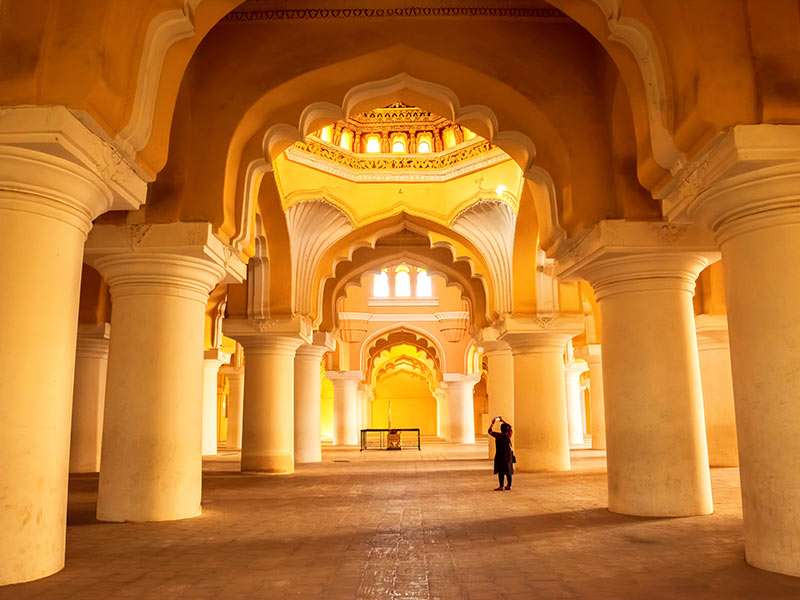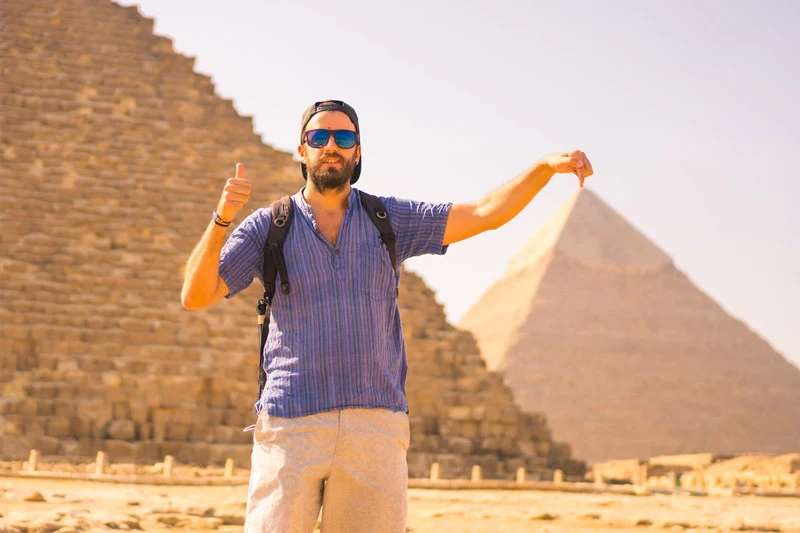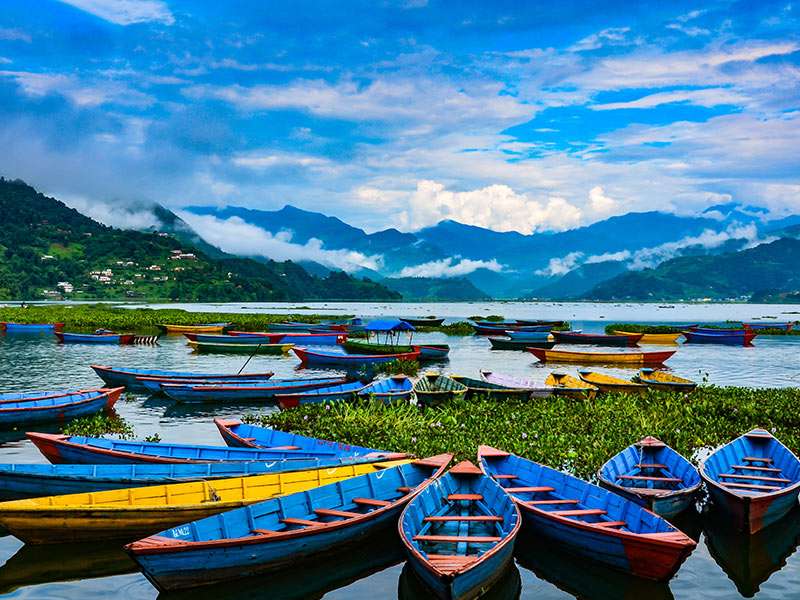
Fatehpur Sikri, India
Fatehpur Sikri India, a city primarily constructed using red sandstone, is located approximately 37 kilometers away from Agra. It was established by the Mughal Emperor Jalal-ud-din Mohammad Akbar as a tribute to the esteemed Sufi saint Sheikh Salim Chisti.
The city's grandeur and distinctiveness serve as a remarkable testament to the emperor's mastery of architecture. Akbar's inclusive religious beliefs and his passion for literature, architecture, and fine arts resulted in a captivating fusion of Islamic and Hindu influences in the style and design of the buildings in Fatehpur Sikri.
During sunrise and sunset at Fatehpur Sikri, the towers and domes cast striking shadows and silhouettes against the vivid copper-red sky. This breathtaking spectacle offers inspiration to both artists seeking to capture it on canvas and visitors who are in awe of its beauty.
Enclosed within an 11-kilometer-long fortification wall, Fatehpur Sikri boasts numerous gateways. The remnants of this magnificent city include the Imperial Palace Complex, the intricately crafted marble tomb of Sheikh Salim Chisti, and the grand mosque. These structures, second only to the Taj Mahal in terms of architectural splendor, transport visitors to an era of opulent tapestries, luxurious drapes, plush carpets, and the regal ambiance of the Mughal dynasty.
Where is Fatehpur Sikri Located?
Fatehpur Sikri is in northern India, fair west of Agra, established by a 16th-century Mughal sovereign. Ruddy sandstone buildings cluster at its center. Buland Darwaza door is the entrance to Jama Masjid mosque. Adjacent is the marble Tomb of Salim Chishti. Diwan-E-Khas corridor incorporates a carved central column.
Jodha Bais Royal residence could be a blend of Hindu and Mughal styles, another to the 5-story Panch Mahal that ignores the site. Fatehpur Sikri is around 39 kilometers from Agra.
The closest Airplane terminal is Agra Air terminal (moreover known as Kheria Airplane terminal), 40 kilometers from Fatehpur Sikri. The closest railroad station is Fatehpur Sikri railroad station, approximately 1 kilometer from the city center. It is associated with Agra and neighboring centers by street, where normal transport administrations worked by UPSRTC handle, in expansion to visitor buses and taxis.
What is the Story and History Behind Fatehpur Sikri India?
Archeological proof focuses on the settlement of the locale since the Painted Dim Product period. Concurring to history specialist Syed Ali Nadeem Rezavi, the locale thrived beneath Sunga run the show and after that beneath Sikarwar Rajputs, who built a fortification when they controlled the zone briefly within the 12th century.
The region afterward came beneath the run of the Delhi Sultanate and numerous mosques were built at the put which developed in measure amid the period of the Khalji tradition.
Going before Akbar's assignment of the location for his capital city, his forerunners Babur and Humayun did much to update Fatehpur Sikri's urban format. Attilio Petruccioli, a researcher of Islamic engineering and Teacher of Scene Design at the Polytechnic College of Bari, Italy, famous that Babur and his successors needed to urge absence from the clamor and disarray of Agra and construct a continuous grouping of gardens on the free cleared out the bank of the Yamuna, connected both by pontoon and by arrive.
Petruccioli includes that when such idealist scenes are imagined, the landmark gets to be the organizing component of the city at expansive, incompletely due to its introduction at a critical area and incompletely due to its sheer estimate. Humayun's Tomb was one such organizing component that towered over the city and is presently one of the foremost recognizable Mughal landmarks within the nation.
The put was much adored by Babur, who called it Shukri ("Much obliged"), after its huge lake that was utilized by Mughal armed forces. Per his journals, Babur built a cultivar here called the "Plant of Triumph" after overcoming Rana Sangha at its edges. Within the center of the adjacent lake, he built a huge stage. A baoli exists at the base of a shake scarp approximately a kilometer from the Hiran Minar.
Akbar remained heirless until 1569 when his child, who got to be known as Jahangir, was born in the village of Sikri in the same year. Akbar started the development of a devout compound in honor of the Chisti holy person Sheik Salim, who had anticipated the birth of Jahangir. After Jahangir's moment of birth, he started the development of a walled city and royal residence likely to test his son's stamina. By building his capital at the Khanqah of Sheik Salim, Akbar related himself with this well-known Sufi arrange and brought authenticity to his rule through this association.
Akbar went to the city as it once was in 1601 after abandoning it. William Finch, going by it 4 or 5 a long time after his passing, expressed that it was lying like a squander forsake. Amid the scourge of bubonic torment, Jahangir remained for three months here. Muhammad Shah remained here a few times and the repair works were begun once more. Be that as it may, with the decrease of the Mughal Realm, the conditions of the buildings declined.
After possessing Agra, the English set up a regulatory center here and it remained so until 1850. In 1815, the Marquess of Hastings requested the repairment of landmarks at Sikri and Sikandra. The town was a district and was afterward made an informed range. The populace in 1901 was 7,147.
Things you Don't Know about Sikri India Architecture:
Fatehpur Sikri sits on a rough edge, 3 kilometers in length and 1 km wide, and the royal residence city is encompassed by a 6 km divider on three sides with the fourth bordered by a lake. The city is for the most part organized around this 40 m tall edge and falls generally into the shape of a rhombus.
The common format of the ground structures, particularly the "ceaseless and compact design of gardens and administrations and offices" that characterized the city, leads urban archaeologists to conclude that Fatehpur Sikri was built essentially to manage recreation and extravagance for its popular inhabitants.
The dynastic design of Fatehpur Sikri was demonstrated in Timurid shapes and styles. The city was built enormously and ideally with ruddy sandstone. Gujarati's impacts are also seen in its building lexicon and stylistic layout of the royal residences of Fatehpur Sikri.
The city's engineering reflects both the Hindu and Muslim shape of residential engineering well known in India at the time. The momentous conservation of these unique spaces permits advanced archaeologists to remake scenes of Mughal court life, and to superior get it the chain of command of the city's illustrious and respectable inhabitants.
It is gotten to through entryways along the 5 miles long fortification divider, to be specific, Delhi Door, the Lal Entryway, the Agra Entryway, and Birbal's Entryway, Chandan Pal Door, The Gwalior Door, the Tehra Entryway, the Chor Door, and the Ajmeri Entryway. The royal residence contains summer royal residence and winter royal residence for Ruler Jodha.
Why is Fatehpur Sikri famous?
The word Fateh has its beginnings in Arabia and it implies triumphant in Persian. As the title proposes, it was one of the foremost celebrated cities in Indian history. It still stands and talks of our antiquated radiance. Let us investigate a few actualities in the city and why you ought to visit this put for your occasions.
Things to Know Before Visiting Fatehpur Sikri:
It is an astonishing mixture of ruddy sandstone buildings, counting isolated summer and winter royal residences, and an open-air arrangement for excitement.
It was deserted in 1610. Unquestionably worth going by, it is an awesome illustration of both Hindu and Muslim engineering. Without a doubt, it is a Flawless antiquated city to visit for an evening. Fundamental to urge a direct as there are no signposts and you'll miss out on all portrayals with respect to the zone. This put ought to be on everyone's agenda in Agra!
Sightseers are not permitted to carry any edibles inside the city. Things like tobacco, cigarettes, and other smoking things, mixers, blades, electrical merchandise, etc. are not permitted but sightseers are permitted to carry cameras. Other than these, sightseers are not permitted to touch or scratch dividers or other things.
What is the Best Time to Visit Fatehpur Sikri India?
The most excellent time to visit Fatehpur Sikri is between harvest time and winter (October to March) as by this time the warmth has ebbed and the weather is wonderful and culminates for touring.
Within the rest of the months, the climate is either exceptionally hot or exceptionally cold which can cause distress to the guests.
related tours

South India Tour
11 Days / 10 Nights
From
$ 1230

Egypt Vacation Package
12 Days / 11 Nights
From
$ 1699

Splendors of Nepal Tour
11 Days / 10 Nights
From
$ 2740

Greece Vacation Package
9 Days / 8 Nights
From
$ 1490
